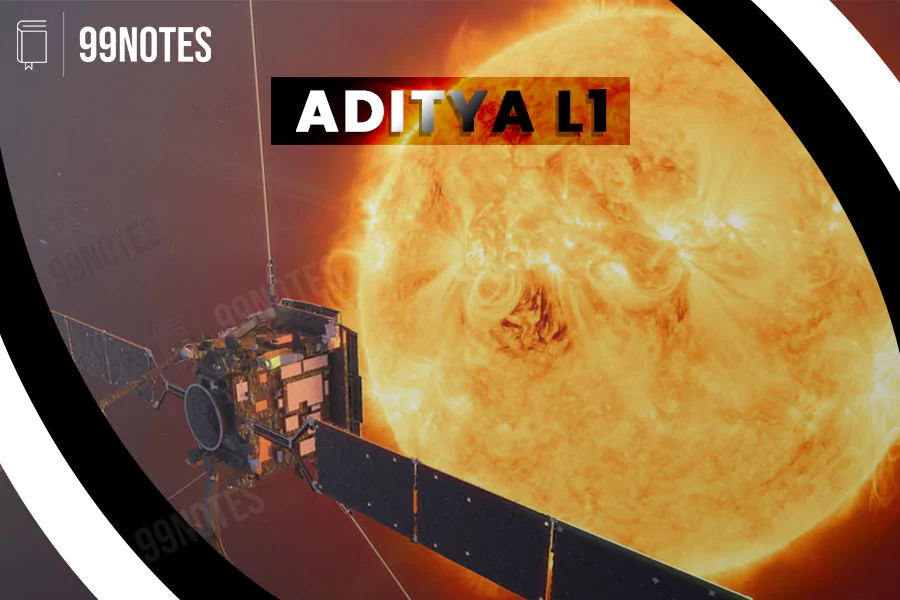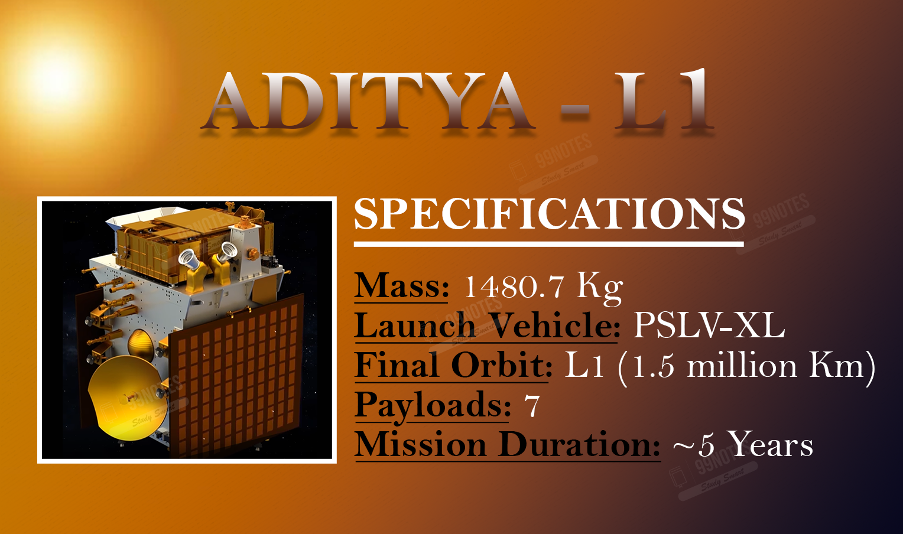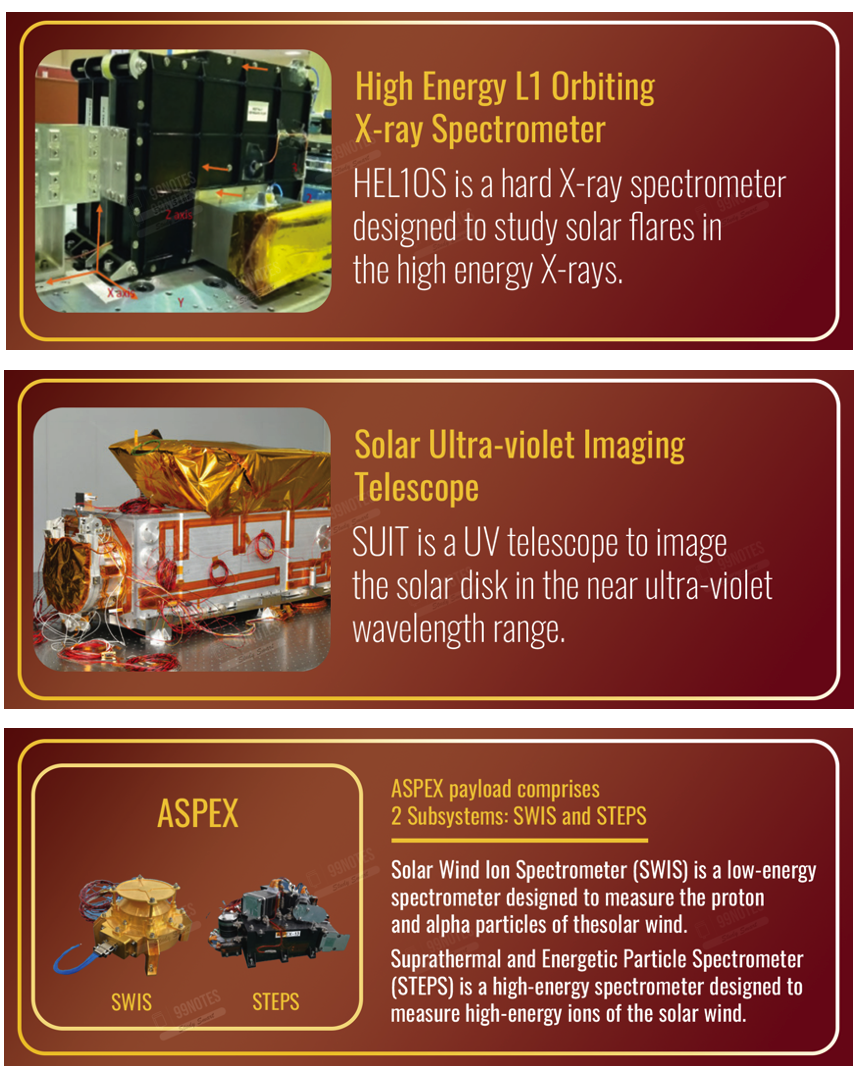Aditya-L1 Mission
Aditya-L1 is the first space-based observatory-class Indian solar mission to study the Sun. The spacecraft will be positioned in a halo orbit around the Sun-Earth system’s Lagrangian point-1 (L1), about 1.5 million km from the Earth.
Launched aboard the PSLV-XL launch vehicle on 2 September 2023, the spacecraft would take 125 days to reach its designated orbit.
The Sun
The Sun is the nearest star in the Solar System. It’s a massive ball of Plasma fuelled by nuclear fusion at its Core.
These are the various constituents of the Sun:
- Core: In the Sun’s Core, fusion occurs in which highly pressurized Hydrogen atoms fuse into Helium atoms, releasing huge amounts of energy.
- Convectional Currents of the Sun: The energy from the Core is released outwards with the help of large numbers of huge convection currents. Since the Sun is made up of Plasma (which are charged particles), each convection cycle is a giant loop of moving charged particles. All moving charges create a magnetic field. Thus, each convection cycle creates its own magnetic field.
- Atmosphere of the Sun:
-
- Photosphere: It is the lowest layer of the Sun’s atmosphere and the Sun’s visible surface, below which the Sun becomes opaque. The temperature of this layer is significantly cooler (~5500o C) than the Core (15 million C). It is the source of the solar flares.
- Chromosphere: It is the layer above the Photosphere. It is red in colour and can be only seen during eclipse. It may play a role in conducting heat from the Core to the outermost Corona.
- Corona: It is the outermost layer of the Sun’s atmosphere and extends millions of Kilometres into outer space. It appears as a plume of ionised gases that flow outward into space. The temperature of the Sun’s Corona can go up to 2 Million Celsius despite being farthest away from the Core. As the gases cool, they become solar wind. Like the Photosphere, it can be only seen during eclipse.
Mission Objectives
- Understanding the Coronal Heating and Solar Wind Acceleration.
- To understand the dynamics of the Sun’s atmosphere and its effect on Earth.
- Understanding the phenomenon of Coronal Mass Ejection (CME), flares and near-earth space weather.
- To understand solar wind distribution and temperature variations.
- To study magnetic field variation in Solar Corona.
Why Study Sun?
- The Sun is the nearest star and the largest object in our solar system; thus, it affects us in many ways.
- The Sun is a dynamic star and extends much beyond what we see; it exhibits various eruptive phenomena and releases immense amounts of energy in the solar system, which, if directed towards Earth, can cause massive disturbances in the near-Earth space weather, various space crafts, communication satellites, power grids etc. can be affected.
- Phenomena associated with the Sun:
-
- Coronal Mass Ejection: Ejection of charged particles (Plasma) from the Sun’s Corona into the Heliosphere.
- Solar Flares: Intense localised eruption of electromagnetic radiations in the Sun’s atmosphere. It is affected by an 11-year solar cycle when the Sun’s magnetic poles flip.
- Solar Winds: Stream of charged particles (protons, electrons & alpha particles) from the Sun’s Corona.
- Sun Spots: These are darker spots on the Photosphere, characterised by reduced surface temperature caused by the magnetic flux concentration inhibiting convection.
Mission Profile
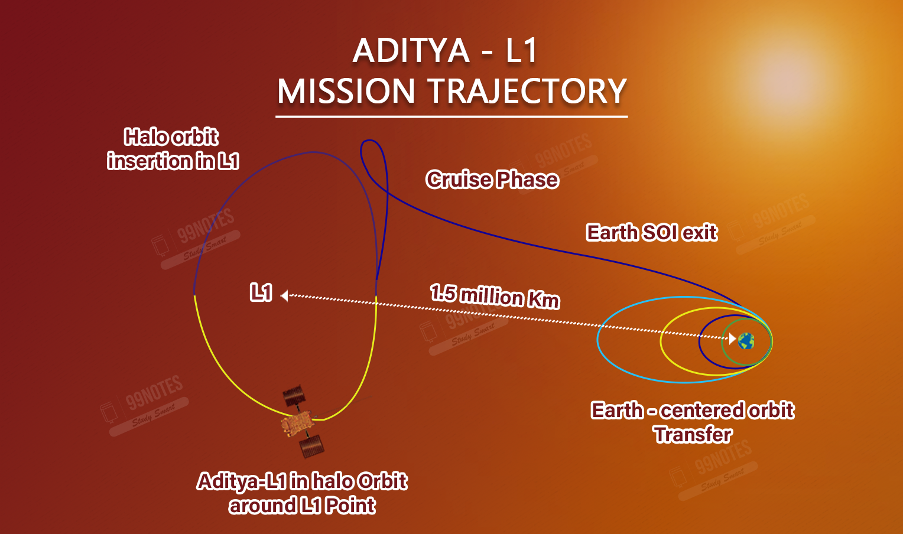
What is Langarange-1 Point?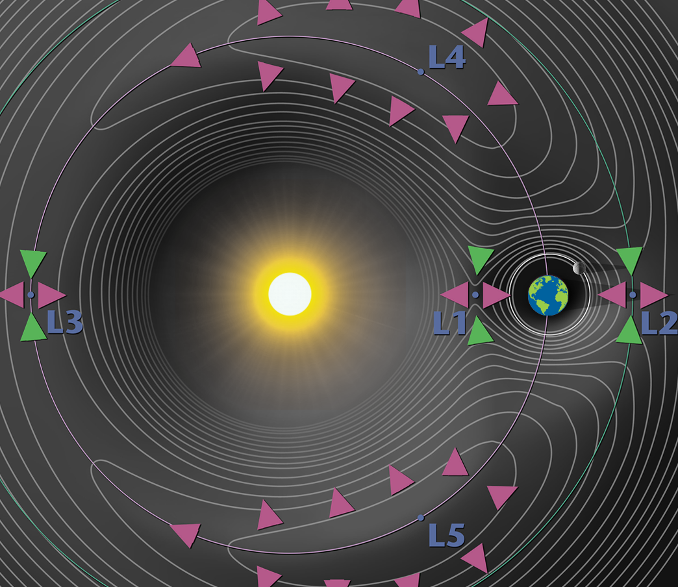
- At the Lagrange point, the gravitational pull of the two large bodies equals the necessary centripetal force required for a small object to move with them. For two-body gravitational systems, there are a total of five Lagrange points denoted as L1, L2, L3, L4 and L5.
- The Lagrange point L1 lies between the Sun-Earth lines. The distance of L1 from Earth is approximately 1% (1.5 Million km) of the Earth-Sun distance.
- Why L1 selected for Aditya Mission?
- L1 point has the major advantage of continuously observing the Sun without any eclipse.
- The Aditya-L1 spacecraft will observe the Sun in an irregularly shaped orbit in a plane roughly perpendicular to the line joining the Earth and the Sun.
Instruments
The spacecraft has 7 scientific instruments in total, in which 4 payloads will observe the Sun directly, and the other 3 instruments will carry out in-situ studies of solar winds and magnetic field at the L-1 langrage point.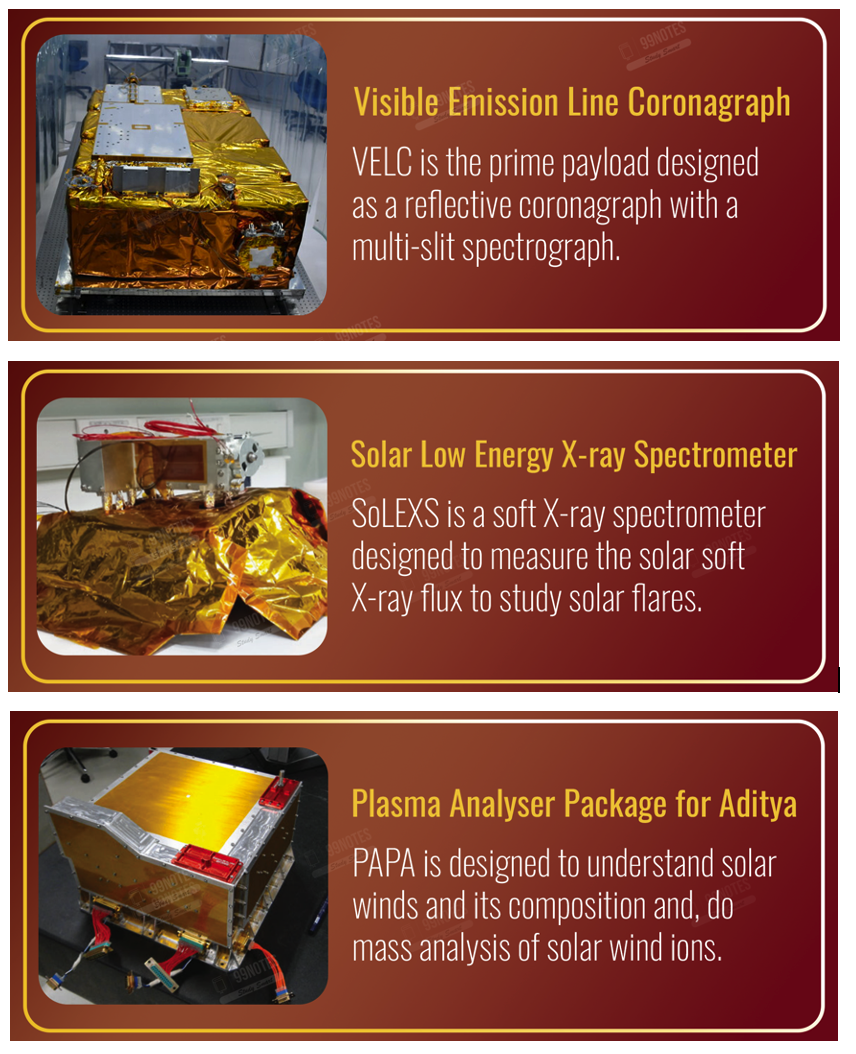
Significance of the Aditya Mission
The Aditya-L1 mission can significantly advance our understanding of the Sun’s behaviour and its interaction with the Earth and space environment.
- Instruments like the Aditya Solar Wind Particle Experiment (ASPEX) and Magnetometer will provide a comprehensive view of solar wind’s properties and interplanetary magnetic field, which will help in refining the models of solar wind behaviour and its effect on Earth’s magnetosphere.
- It will study the near-UV solar radiation and its effect on the upper Earth’s atmosphere. This information may reveal the relationship between solar variability and its effects on Earth’s climatic patterns.
- The following are some unique features of the Aditya-L1 mission:
- First spacecraft to spatially resolve solar disk (circular visible surface of the Sun) in the near UV band.
- On-board intelligence to detect Coronal Mass Ejections (CMEs) and solar flares for optimised observations and data volume.
- Directional and energy variations of the solar wind using multi-direction observations.
- The mission will study the coupling and dynamics of the solar atmosphere. Coupling refers to a firm relation between the Sun and its magnetic field.

